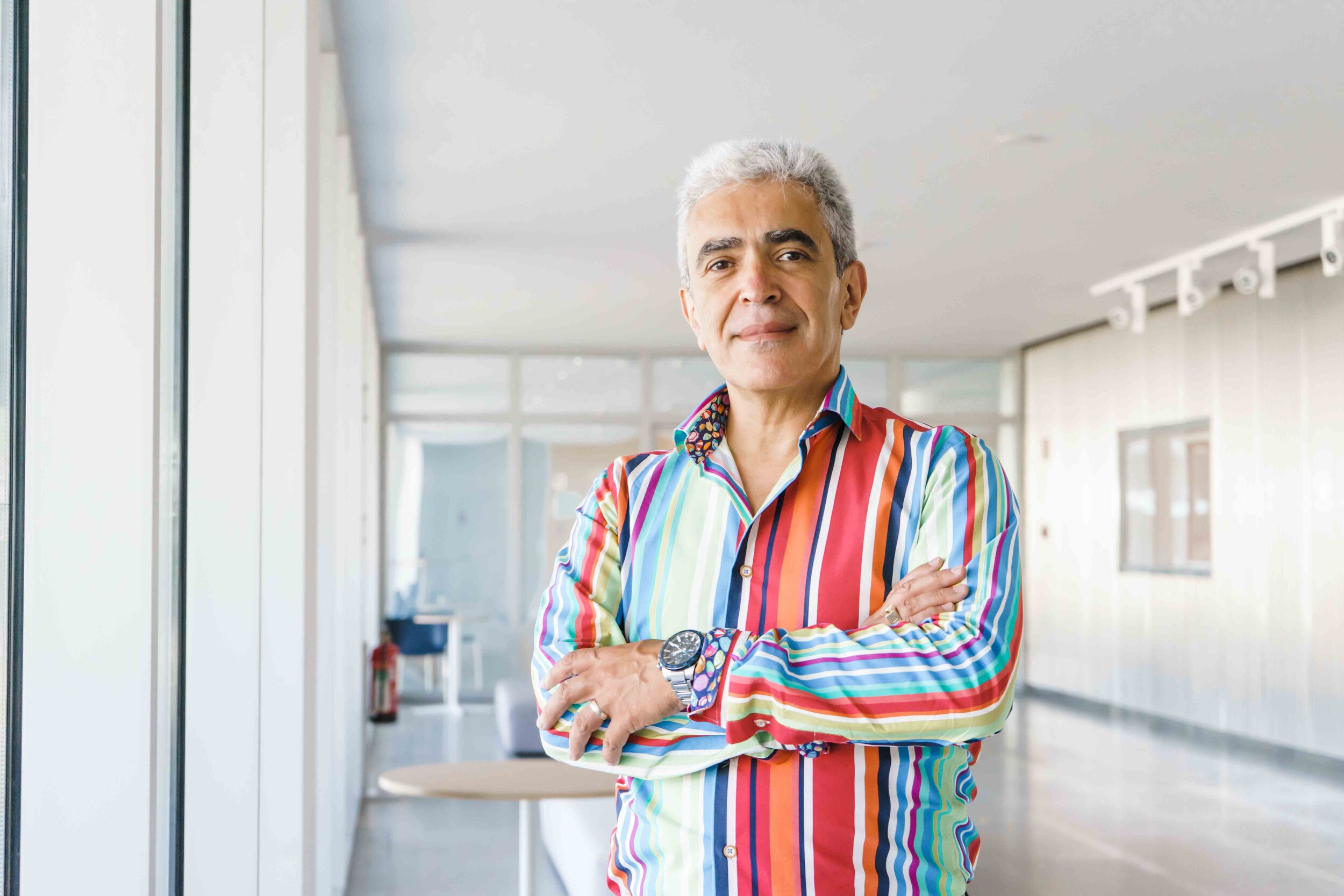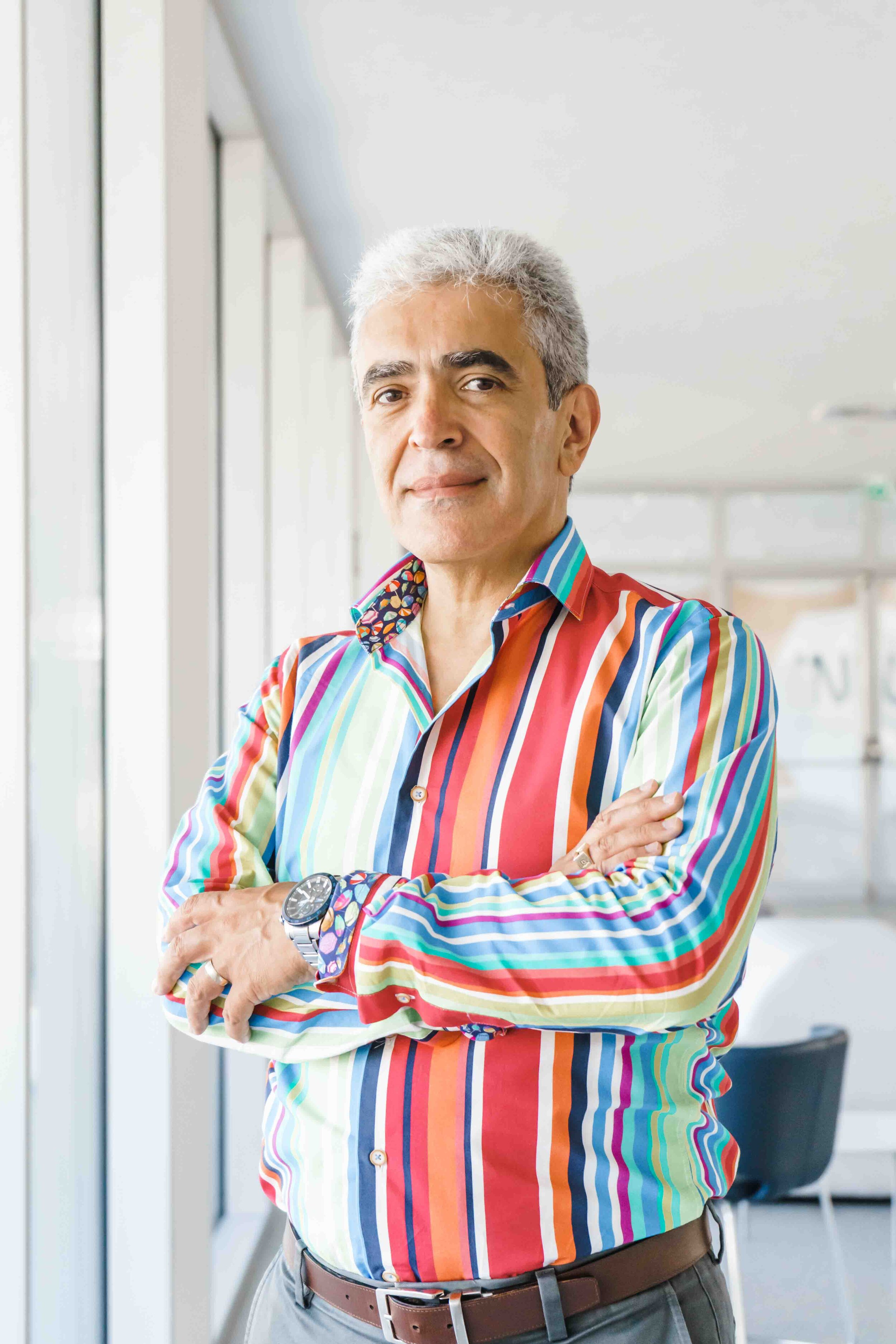
Interview with Ernesto Alfaro, ERA Chair at INL
August 7, 2020
Ernesto Alfaro-Moreno is the leader of the Nanosafety Research Group. Dr Alfaro is leading research on developing methods to assess the toxicity and safety of nanomaterials, with a broad approach evaluating from possible effects on humans to environmental effects. The goal of the Nanosafety group is to evaluate cytotoxic, genotoxic, inflammation, local and systemic effects and in silico analysis.
Dear Ernesto, welcome to Portugal and to INL. How was your journey before arriving here and what were the most important projects you’ve worked in?
I am a Mexican who grew up in Mexico City, and I did my studies during the late 1980s and 1990s. Back in the day, Mexico City was considered the city with the highest levels of air pollution in the world. I was studying Pharmaceutical Chemistry, and to me, it was a very natural question trying to understand how the airborne particles related to the air pollution where triggering adverse effects on humans.
My Master and PhD degrees where on Biomedicine, on projects where I was characterising the toxic effects of PM10 and how these toxic effects were related to the composition of the particles. These were very important studies because we were the first group identifying that variations of composition on particles within the same city, were related to different intensities of cellular effects. During these studies, I did the first evaluation on how particulate matter could trigger effects on vascular cells.
Then in the mid-2000’s I did my postdoctoral time in the Lung Toxicology Unit of the K.U. Leuven in Belgium. It was a very exciting time, with a group that allowed me to follow my wildest ideas. There I was leading a project to develop a multiple cell culture mimicking the alveolar-vascular interaction, and the multiple cell culture became a good model to understand the inflammatory process and how these different compartments communicate. After my postdoctoral training, I went back to Mexico in 2008, where I led the Environmental Toxicology Laboratory at the National Cancer Institute, and we continued to develop multiple cell culture models and evaluating nanomaterials and urban particles. In 2015 moved to Sweden to lead a project on Inhalation Toxicology, and after 5 years, I was hired by INL to lead the Nanosafety Group, under the wing of the ERA-Chair-Sinfonia Project.
“Nanomaterials have captured our imagination with characteristics that we have never seen before. Yet they have equally captured our concerns by showing properties and toxicity that we have not yet fully understood.” What is the role of the NanoSafety in INL’s research?
Nanosafety plays a key role for research in nanomaterials, and therefore a key role at INL. It has been widely documented since ancient times, that humans get an adverse effect when exposed to different types of particulate matter, and probably the best know example is the miners of coal and asbestos. With time, the regulations for the use of many materials that come in the form of particles have improved the quality of life of people, but with the rise of nanotechnology, new materials and new sizes and shapes of already known materials have been created in the last 30 years. In some cases, the new dimensions of already known materials have shown that the toxicological behaviour of the materials is different in the nanosize than in the micro size. Considering that the use of nanomaterial is involved in so many different ways and that the use of these materials may get in contact with the environment, living organisms in different ecosystems, and direct or indirect contact with humans, it is critical to have strong evidence that the materials that we use are safe, or if we need to have special considerations in the way we use, discard and recycle these nanomaterials.
What are the most exciting innovations and biggest concerns in nanotechnology?
The most exciting innovations are way too many to make a shortlist, because many things may be omitted, but in the field of concerns, I found the possible adverse effects on living organisms and the environment as two central actors to be evaluated. There are multiple examples in the history of science where something that was considered as a great advance for our way of life, became a threaten in not so long term. Let’s take the example of DDT, which was synthesized in 1874 and by 1939 it was clear that DDT had a great insecticidal effect, helping to control diseases such as malaria and typhus. The person who described this effect even received the Nobel prize in medicine for saving the lives of millions. Unfortunately, the chemical properties of DDT made it a persistent chemical in the environment, with devastating environmental effects. The same can be described for several chemicals such as Teflon, Bisphenol-A, phthalates, among many others. We have to be careful and responsible when it comes to the use of nanomaterials. We have to generate enough evidence to be sure that the environmental and health effects that may be triggered by these materials are in a range that we consider as safe, and if not, what is the safest way to handle, use and dispose of them.
What does the future of nano research look like?
It looks fascinating. We have the chance to develop what at some point, not so long ago, use to look like science fiction. Landing quantum properties of matter into daily life applications was something that when I was a small kid, we use to watch on Star Trek! But now we can see that every year a great deal of progress is done in the manipulation of photons, atomic and molecular arrangement in materials, responses to stimuli in fractions of time that are so small that we cannot have a real grasp of what that means considering the limitations of our perception. But all these advances are not free of problems, and we are in time to try to understand, prevent, modify and regulate the use of things that may be a potential danger for humans, wildlife and the environment in general. I am sure that with the right approach, nano research will improve the lives of humans, and the way we relate with our environment.
What excites you about your work and future projects at INL?
Coming to INL is a great opportunity to make a real impact on my field of expertise. I did start my first approaches to science in the summer of 1990. Thirty years later, I have the chance to take all the expertise and lead an effort to make nanoscience a safe adventure.
INL has so many projects related to the Environment, Food, Medicine, Green Energy and many others, that the Nanosafety Group will have the chance to collaborate with many, if not all of them. The chance to interact with so many disciplines will give me the chance to grow as a scientist and give an insight from my particular point of view, which I hope will be of interest to all my colleagues at INL.
+ Interested in STRENGTHENING YOUR CAREER AT INL? We are hiring for the SINFONIA Project!





